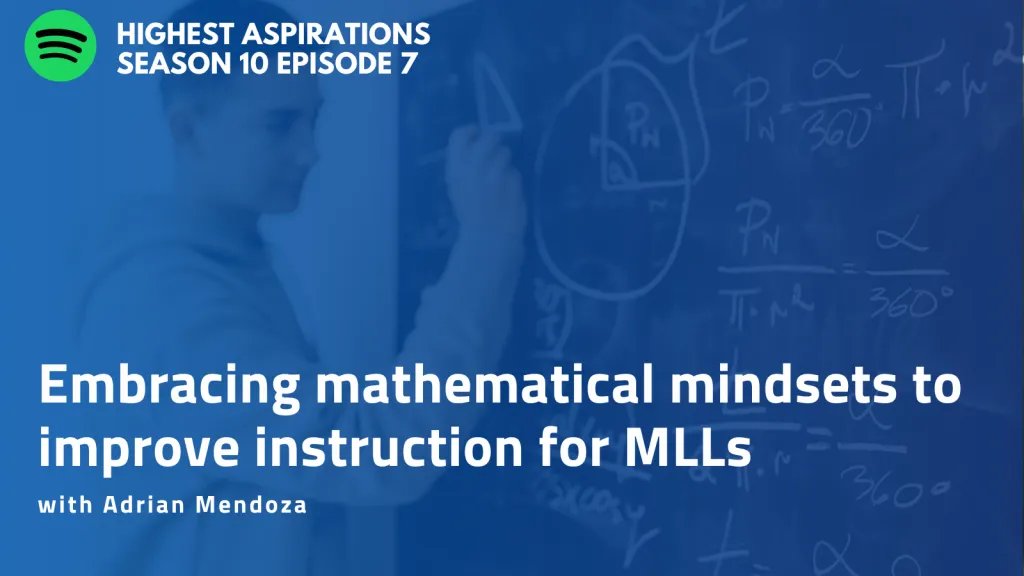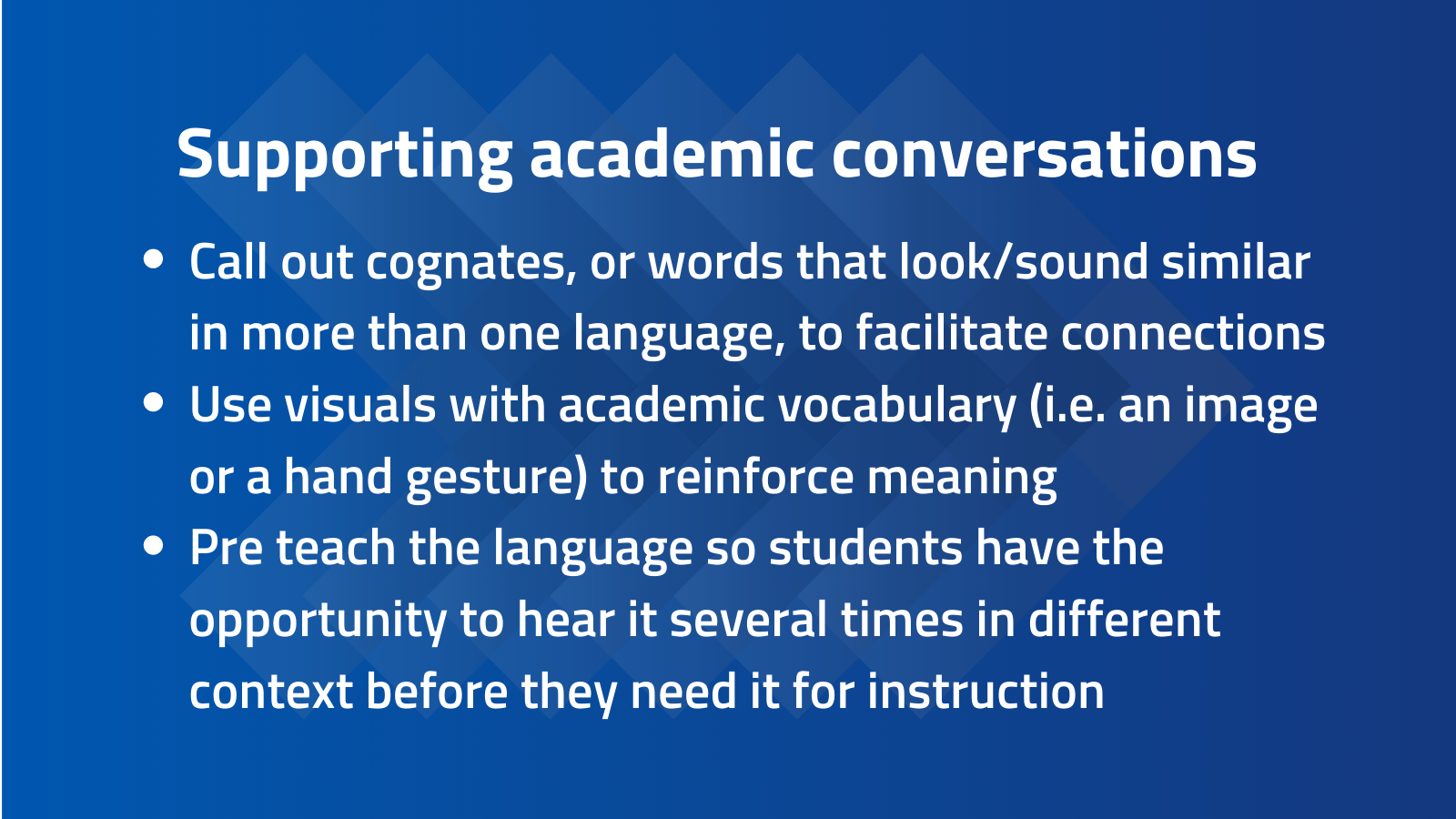Embracing mathematical mindsets to improve instruction for MLLs


Embracing mathematical mindsets to improve instruction for MLLs
It is a common misconception that not everyone is a “math person” or has the potential to be. When we create these narratives about ourselves or our students, they can be extremely limiting of our accomplishments in the math classroom and in our careers. But by shifting our mindsets and empowering our students to do the same, we can create a learning environment where all students, including multilingual learners, can thrive.
Adrian Mendoza recently joined us to dive deeper into this topic. Mendoza previously worked as an Instructional Math Coach in San Marcos CISD before joining Seidlitz Education, and he has provided professional development to educators for more than 7 years. He recently authored the book Teaching Math to ELs, and his present action research project is about the importance of building mathematical growth mindset communities.
Listen to the full conversation with Adrian Mendoza here, and find a few ideas from our conversation that you can use in your classroom to ensure that every student can become a math person.
Mathematical mindsets that help MLLs thrive
For all students to believe that they can be successful at math, we need to begin by designing our lessons with opportunities for different types of learners to thrive.
First, math instruction should always offer multiple entry points that accommodate students’ variety of perspectives and ways of thinking. Often students may struggle with a math lesson or course and believe they are not “cut out” for mathematical thinking, but in reality it is just the type of instruction that isn’t working for them. Mendoza encourages educators to offer students a choice of the methods by which they learn and share their learning.
Next, Mendoza tells educators to think about how they support students with the visualization component of mathematics. This is a critical way to ensure that as teachers, we are providing multiple entry points for every single student in the classroom to make connections.

Visuals can often lead to the third component of the mathematical mindset cycle, which involves languages and conversation in the classroom. Students need the opportunity to have dialogue with each other about what they are learning and the connections they are making in order to lower their affective filter and ultimately thrive.
First steps for supporting academic conversations
Educators may often not realize that some students need support with academic language because their social language sounds proficient or fluent. But it’s important to remember that students may be able to easily have a conversation in English during recess, but they still may lack understanding or knowledge of academic language being used in the classroom.
Supporting academic language instruction may feel overwhelming when it is a new skill for teachers, but Mendoza shares several tips that can be quickly implemented to your lesson and will enable your multilingual learners to be able to fully participate - or as he describes it, “making sure all of the students know how to play the game”.

Building in time for high-quality interactions while delivering instruction
Any educator can attest to unintentionally spending the majority of their lesson doing that talking at some point in their career. As the “expert” on the content, it is easy to get caught up in focusing on the standards and direct instruction in order to convey the information as quickly and thoroughly as possible. But Mendoza reminds us that we cannot teach math without teaching language, and it is crucial to hold ourselves accountable to building in time for student conversations and language so they can ultimately own and master the content themselves.
“We need to end up being facilitators of learning. At the end of the day, yes, I can be an expert in the content, but we're really part of the teaching materials, and with the three-way cycle, students are going to become the experts,” Mendoza explains.
Mendoza emphasizes the importance of process time and encouraging students that are hesitant to share or speak to use supports like sentence starters to encourage them to participate. Sometimes, a 30 second pause to process is all the student needs to make a connection.
“Those kids might be those 30 seconds away from producing language and from going from, ‘I'm not a math person,’ to, ‘Yeah, I'm a math person and I can process math in classrooms.’”
Episode resources:
- Follow him @AdrianMendozaED on Twitter, Instagram, Facebook
- Visit https://adrianmendozaed.com/ for webinars, resources, PD and more
- Read Small Moves, Big Gains by Nancy Motley
- Check out Atomic Habits by James Clear
- Finally, make sure to get his book Teaching Math to English Learners, which dives deeper into all of the topics in this blog post and interview